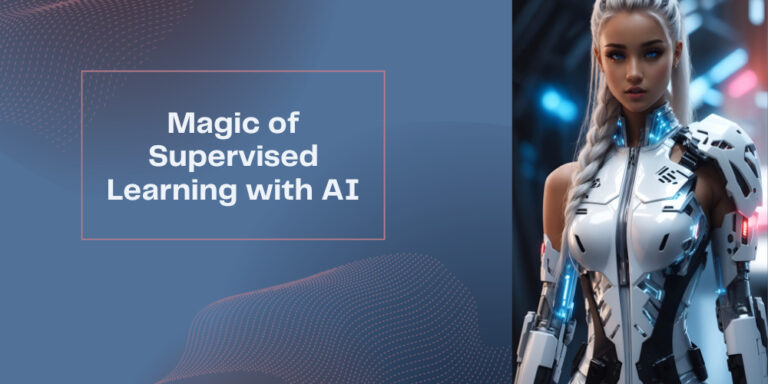Power of Algorithms and Models: Unlocking the Machine Learning
In today’s rapidly evolving digital landscape, the ability of computers to learn, adapt, and make predictions based on data has revolutionized industries ranging from healthcare to finance. This blog post delves deep into the fascinating world of algorithms and models that empower computers to learn and make decisions, shedding light on their significance, functioning, and real-world applications.

Table of Contents
- Introduction: The Age of Machine Learning
2. Understanding Algorithms
2.1 Supervised Learning
2.2 Unsupervised Learning
2.3 Reinforcement Learning
3. The Role of Data
4. Building Blocks of Machine Learning Models
4.1 Linear Regression
4.2 Decision Trees
4.3 Neural Networks
4.4 Support Vector Machines (SVMs)
5. Training the Models
6. Evaluation and Validation
7. Applications in Healthcare
8. Transforming Finance
9. Enhancing E-commerce
10. The Future of Machine Learning
11. Ethical Considerations
12. Conclusion: The Power of Machine Learning Unleashed
13. Frequently Asked Questions
Power of Algorithms and Models
Introduction: The Age of Machine Learning
In an era where data reigns supreme, machine learning has emerged as the driving force behind transformative technological advances. Algorithms and models are the very essence of machine learning, enabling computers to not just crunch numbers but to truly comprehend and extract insights from data.
Understanding Algorithms
Supervised Learning
Within the realm of machine learning, supervised learning stands as a foundational concept. It involves teaching the computer by providing labeled data, allowing it to identify patterns and relationships. For instance, in medical diagnostics, supervised learning algorithms can predict diseases based on patient data.
Unsupervised Learning
In contrast, unsupervised learning operates independently of labeled data. It explores data on its own, finding hidden patterns or clusters. This is valuable in recommendation systems, where it can suggest products or content to users based on their preferences.
Reinforcement Learning
Reinforcement learning is akin to teaching a computer to play chess. It learns through trial and error, making decisions to maximize rewards while navigating in an environment.
The Role of Data
At the heart of machine learning lies data. The quality, quantity, and diversity of data play a pivotal role in the success of algorithms and models. The more data available, the better the machine can learn and predict.
Building Blocks of Machine Learning Models
Linear Regression
Linear regression is a simple yet powerful model that finds the relationship between two variables. For instance, it can predict the price of a house based on its size.
Decision Trees
Decision trees make decisions by following a tree-like structure. They are used in various applications, from customer service chatbots to medical diagnosis.
Neural Networks
Neural networks are inspired by the human brain. They consist of layers of interconnected nodes and are used in image recognition, natural language processing, and much more.
Support Vector Machines (SVMs)
SVMs are excellent at classification tasks, such as spam email detection or identifying fraudulent transactions.
Training the Models
Training machine learning models involves feeding them data and adjusting their parameters until they can make accurate predictions. This process requires both skill and patience.
Evaluation and Validation
Before deploying a model in the real world, it’s essential to rigorously evaluate and validate its performance. This ensures that it doesn’t make critical errors.
Applications in Healthcare
Machine learning has made significant inroads in healthcare, from predicting disease outbreaks to personalizing treatment plans for patients.
Transforming Finance
In the financial sector, algorithms and models are used for risk assessment, fraud detection, and algorithmic trading.
Enhancing E-commerce
E-commerce giants employ machine learning to offer personalized recommendations, improving user experience and boosting sales.
The Future of Machine Learning
The future of machine learning is promising, with advancements in deep learning, quantum computing, and more. It has the capacity to bring about significant transformation in various industries.
Ethical Considerations
While machine learning offers immense potential, it also raises ethical concerns, such as bias in algorithms and the responsible use of data.
Conclusion: The Power of Machine Learning Unleashed
Algorithms and models are the backbone of machine learning, empowering computers to learn, predict, and make decisions. As we navigate this data-driven world, their role becomes increasingly vital, transforming industries, and shaping our future.
Frequently Asked Questions
Q1: What is the main difference between supervised and unsupervised learning?
Supervised learning uses labeled data to teach computers, while unsupervised learning doesn’t rely on labels, letting computers find patterns independently.
Q2: Can machine learning models work without data?
No, machine learning models need data to learn and make predictions. The more relevant and diverse the data, the better the model’s performance.
Q3: What are some common applications of support vector machines (SVMs)?
SVMs are widely used in applications such as spam email detection, image classification, and fraud detection.
Q4: How can machine learning benefit the healthcare industry?
Machine learning can predict disease outbreaks, assist in diagnosis, and personalize treatment plans, improving patient care.
Q5: What ethical concerns are associated with machine learning?
Ethical concerns include bias in algorithms, privacy issues, and the responsible handling of sensitive data.
Thanks for reading this article.






